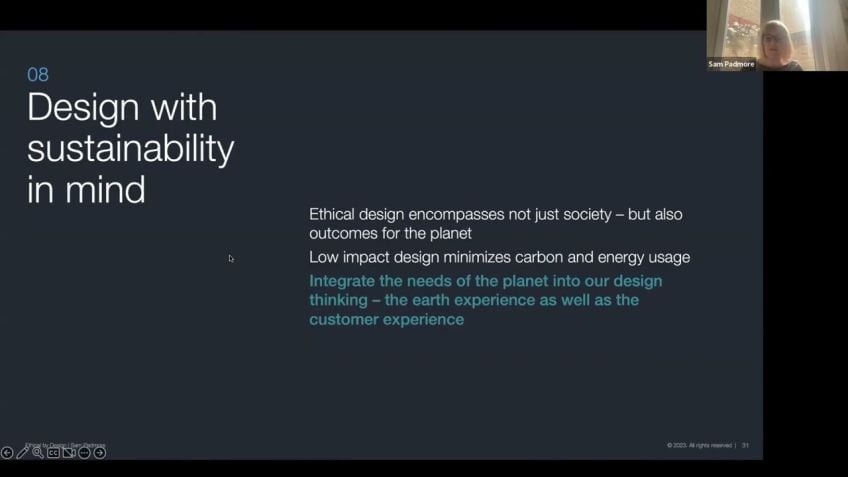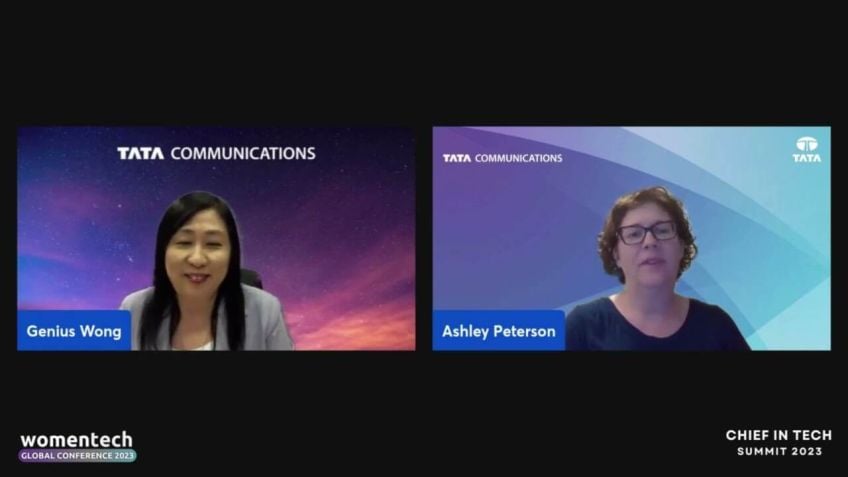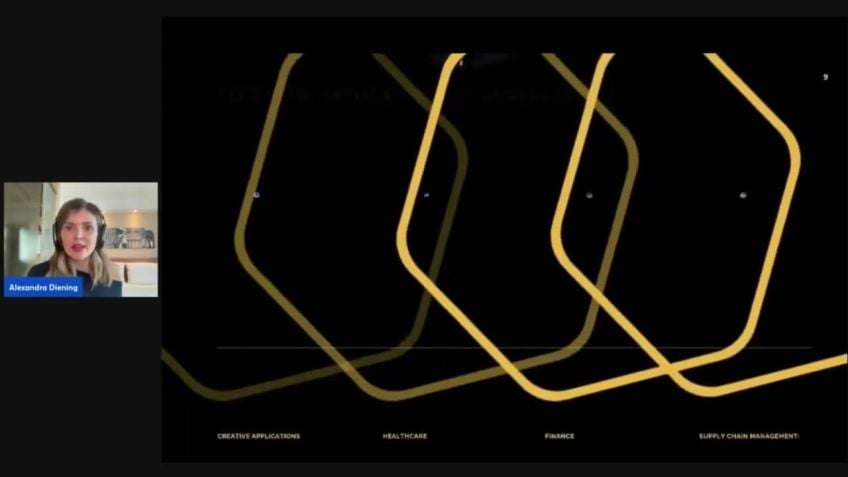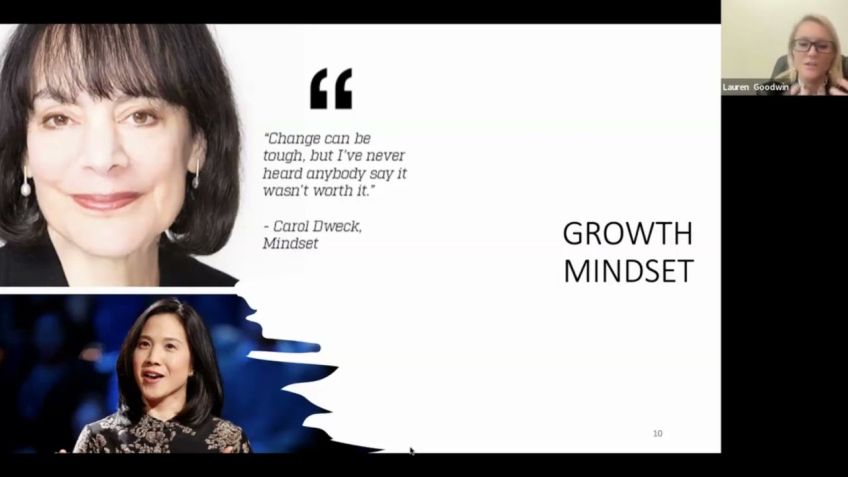Rittika Basu Age and Interface: Equipping Older Adults with Technological Tools
Rittika Basu
Visual DesignerAge & Interface: Equipping Older Adults with Technology
My name is Ritika Basu and as a visual designer, I am passionate about discussing the importance of accessibility and design in technology – particularly with regard to older generations. Today, I will be focusing on the critical issue of seniors' reliance on electronic devices and the ability to confidently use them.
Accessibility Concerns amongst Older Generations
Research conducted by Pew Research Center revealed that in 2015, only 11% of seniors were comfortable with using digital devices such as computers and smartphones. Six years later, this figure sits at just 8%, a stark contrast to the 48% of younger adults who have become adept 'netizens'. It is clear that seniors constitute the demographic least inclined towards utilizing digital applications. This uncomfortable reality can be attributed to their lack of digital literacy expertise and unfamiliarity with their digital rights.
In response to this, emerging GERON technology and Gerontological design have been proposed as potential solutions. Designed to assist our older population in adopting and adjusting to new technologies, these sciences of aging are making headway in various sectors, from medicine and nursing to academia and healthcare.
An Introduction to WC Principles and Assistive Design Tools
WC principles are popularly-used online resources which outline rules and standards to make web content more user-friendly, comprehensible, and accessible. These principles have been especially beneficial to individuals with different types of impairments and limitations as they seek to assist users with low vision, hearing loss, learning disabilities, and other forms of disabilities.
What is GERON technology and Gerontological Design?
In the digital age, designing for accessibility has become a mandatory requirement for designers. GERON technology and Gerontological design are an amalgamation of gerontology and design thinking methodologies aimed at helping accommodate users with specific needs.
Understanding Digital Literacy
- Digital literacy refers to the ability to effectively use and understand digital tools such as smartphones or computers.
- Digital citizens are individuals who can write emails, edit online documents, access information, and network via digital tools. They can create, operate, share, consume and scrutinize digital content easily.
- Netizen refers to individuals who use the internet frequently.
- Digital Citizenship covers wider subjects like internet safety, digital etiquette, online behavior, and cyber security data related topics.
The Problem: Age-Related Barriers to Digital Usage
With age, several factors may hinder an individual's ability to use digital devices. This can include vision impairment, difficulty identifying different shades of colors, hearing problems, and slower reflexes. WC web content accessibility guidelines are measures which, if adopted by designers and developers, can help make digital platforms more user-friendly for older adults.
Solution: Implementing Strategies for Digital Accessibility
Here are some potential solutions to handle the challenges faced by seniors while using technology:
- Using a color contrast checker and a contrast ratio of double or AAA for easy readability.
- Designing systems which allows users to change the font sizes.
- Using focus states to make it easer for users to inetract with the system.
- Assisting seniors on a one-to-one basis to make them familiar with the technology.
- Design and develop tools that suit the habits and preferences of older adults. Keep designs simple, affordable, seamless and user-friendly.
Overall, understanding the unique needs and limitations of our older population is crucial to designing and implementing effective digital solutions that they can confidently and comfortably use.
Connect and Engage
Feel free to drop any questions in the comment section below. You can also connect with me on Linkedin.
Let's make the digital world more inclusive for every generation!
Video Transcription
Hello everyone. My name is Ritika Basu and I'm a visual designer from India. The title of my talk session is age and interface equipping older adults with technology.As you might have guessed, the name suggests that this talk will be covering topics on accessibility, design and principles of ad with regard to older adults or older digital users in 2015. According to a research survey conducted by Pew Research Center, 11% of seniors are not confident to use computers, smartphones and electronic devices. After six years, the same research center stated that only 8% of older adults are using internet contrast to 48% of younger adults being netizens.
It is being observed that seniors are the least inclined demography towards digital applications. Now, why is that so? Um sorry. Ok. Yeah, sorry, sorry for the technical issues. OK. Now stating the premise what these statistics are trying to communicate as that seniors, people above the age group of 60 plus years are uncomfortable using new technologies or new media devices. We also observe that our grandparents are struggling to use smartphones and laptops.
They lack digital literacy skills and are unaware of their digital rights. One of the solutions that designers, researchers and academicians are coming up with is that the emergence of GERON technology and gerontological design. While gerontology is the science of aging and the problems associated with old age geron technology. This term was devised by Professor Jan Craftsman in 1989 in Edinburgh University. It is the portmanteau of gerontology and technology. Gerontological design are created by the amalgamation of gerontology and design thinking methodologies to help the older population to embrace and adapt new technologies. The knowledge is applied in medicine, nursing, academia, health care and behavioral psychology. We will also focus on some of the popular WC principles which is an online resource that states rules and standards to make web content more understandable, usable and accessible for users with special needs, differently abled users and people with different forms of impairments or limitations.
It is a helpful guide that accommodates users with lower vision, hearing loss, learning disabilities and other forms of disabilities. It is developed by World wide Web Consortium individuals and organizations, governments across the globe. We will also cover a topic on color safe.
It is an assistive design tool to choose color combinations of double and AAA contrast for browsers with low vision. Let's take a look at these two terms GERON technology and Gerontological design being a designer myself. It has been made mandatory for us all designers and are the members of a fraternity to equip our web designs or let's say mobile application designs with accessibility design principles so that it accommodates users with different needs or special needs. Let's take a look at some of the popular terminologies. Digital literacy or vocabulary refers to the ability to use, operate and have the knowledge of digital mediums. It includes mobile literacy that means one can use and understand the smartphone and computer literacy. A user is called a digital citizen when he or she is capable of writing emails, editing online documents, accessing information and network via digital tools. He or she will be able to create operate, share, consume and scrutinize digital content easily. While netizens refers to individuals who uses the internet frequently. Digital citizenship is a broad spectrum covering subjects like internet safety, digital etiquette, how to behave on online platforms and what form of languages they should be using cyber bullying, creative copyrights, privacy and other security data related topics.
These all come under the umbrella term of digital citizenship, technophobia is defined as irrational fear and unease towards using modern technology. While computer anxiety refers to the negative attitude towards using a computer, even it could be, it could be related to the thought of having or thought of the thought of having using the computer. This could also trigger fear among some individuals. Many older adults have misconceptions about technologies and are affected by technophobia and computer anxiety. Hence they avoid using new gadgets. So it is the duty of us the younger generations to encourage older adults and also to be patient with them in order to eradicate such irrational fears, understanding the problem. Now, we have to think why is it difficult for older adults to use digital devices? What aging factors prevents them from becoming proficient digital citizens like their younger counterparts? Like basically, we have to think of ways how can we make our older counterparts more relatively tech savvy and what hinders them from using technologies? Mostly human factors.
With age, the lens in human eye loses its flexibility and an unable to see nearby objects. A condition called press bi Aia. Hence they face difficulty by the I mean older adults face difficulty in identifying different shades of blues, greens and purples or tracking fast cursor movements.
They also face problems in hearing the audio instructions. Now we will be taking a look at some of the WC web content accessibility guidelines which states different principles which which if we designers or technologies developers, if we adopt these principles, our web design or our mobile designs will accommodate users with these special needs.
So for example, we need to use double or AAA color contrast ratio and use a color contrast checker. Hence we as designers should not use the design with small fonts design a system where they can change. The font sizes rely on multiple sensory outputs. In case audio is involved, implement the option of titles, text should not be smaller than 14 point size and largest she text should be 18 points of above. Speak at a slower than normal pace and use nonverbal communication means like hand gestures and facial expressions. Speaking slowly will allow older adults the time to absorb the information and understand. Also use focus states. These days, Google's material IO has been defining rules to create focus states for different forms of CTA CTA, meaning call to actions like buttons, text field toggles.
Basically the areas where users digital citizens can interact with the system. For example, Zara's website has an accessibility feature where the user or the browser has the liberty to change the font size, change the color ratio and all I um may I take all the questions in the end? Is that fine? No cross country? OK. That's fine. OK. OK. Let me take it. Uh Yes. Uh in order to accommodate different accents, I I have also found inaccuracy in subtitles. Um I usually u uh usually um use read aloud features by in Mac. There is uh there is a voice uh voice setting which you can turn on which will read whatever is present in the screen. Maybe after the talk, I can show that feature. Does that answer your question, Christine? OK. Let's take a look at some of the behavioral changes. Older people have slower reflexes and deteriorating motor skills. They face difficulty to press smaller buttons or respond quickly. Older generations take longer time to respond. And think they feel fatigue and get tired easily. Button should be sized 48 pixel oh sorry uh sorry button should be always size 48 pixels and above the device should not require rapid input or precise input and should allow human errors. Teach on 1 to 1 basis.
Since every senior's learning need is different, you may teach them about customizing accessibility features in their smartphones example, increasing color contrast or using a magnifier feature with age memory deteriorates in a person. Elderly users find difficulty to memorize complex new objects concepts.
They also prefer systems that help them to remember things like the reminder option in phones or planning using Google calendars, avoid using features that need advanced technical knowledge and do not use lengthy texts. Sufficient time breaks should be provided to sustain the attention span and focus of older adults. Memorizing strategies should be applied like association localization of content and reputation technique. Example, password hints or reset, password links provide always provide pictures and graphics for better communication.
Older adults will prefer devices that matches their habits. They would prefer a large screen tablet with naked eye than a small screen phone with glasses. Keep your design simple, affordable, seamless and user friendly. Next, I will come to how I conducted research for my project.
This is an academic project which I have dedicated in the memory of my late grandparents, Mister Shh Chandra Choudhury and Missus Noa Chandra Chaudhury. Um This is um I volunteered seven months at tech SOTO. It is a Canadian A NGO that is devoted to teaching older adults about the usage of technology. They connect tech savvy volunteers like millennials and Gen Z with older adults who lack digital literacy skills. And we have like sessions, working groups, even on 101 A A sessions where we help older adults to learn a new feature or how to use technology and this is free of cost. Thank you, everyone. Feel free to drop any questions. I will take a look at the questions now and if you want to connect on linkedin, let's see the questions. OK. Um Hi Christine, let me show you the system. So every um device you use has accessibility features. Uh Voiceover is the feature you can use in Mac. If you just turn it on, everything will be red. I see, turn over voice over. I'm sure even in mobiles you might have. I have no idea about if any free source software is there. Uh But let me type something free talk back, talk back feature to install accessibility design. You can try this or A I. It is an um artificial intelligence software.
What it does, it makes like whoever speaks, it's a uh making notes A I software, its algorithm is such that whatever you speak, it will just um map it down, write it down with according to the time. So in our meetings, we use oa I, and then we can refer back to their, uh, to their basically um, to the notes. Uh, try, how do I type here? Oa, I, how do I type here? Ah, oa, I try this. Ooa, I, yeah, auto I should also work. No, no, sorry. No, no, oa, I, this should be the link. Listen, it's free of cost. Oa, I oa, I, it's a little outer actually. Du du du di on here. Any other questions? OK. Resume share. This is the any other questions you might have sent to prison instead of all like, oh everyone, sorry, that's why it's not appearing. Oa I uh sorry, Christine by mistake. I've sent it to the hosts and presenters. You can try out at A I it's a note making A I software, it's free of cost and you, we also use it in the, in our offices. It's pretty much accurate. It captures English as of now. Like we have also a lot of languages that don't get captured very easily. Or if you use a Mac, I'm sure there will be voice over feature or even in smartphones, there will be such features these days, youtube, I see videos.
They are accommodating captions, subtitles in various languages, which is very thoughtful of them. Any other question? I do not have any other questions. OK. Thank you so much for your time. Everyone should I and I think the session has ended. We are all time bound. So I'll just close if nobody has any questions. Thank you, Shannon. Thank you so much. Feel free to connect on linkedin. If you guys are there and have a great day, everyone first. It's the gallery view. Ok, bye.






